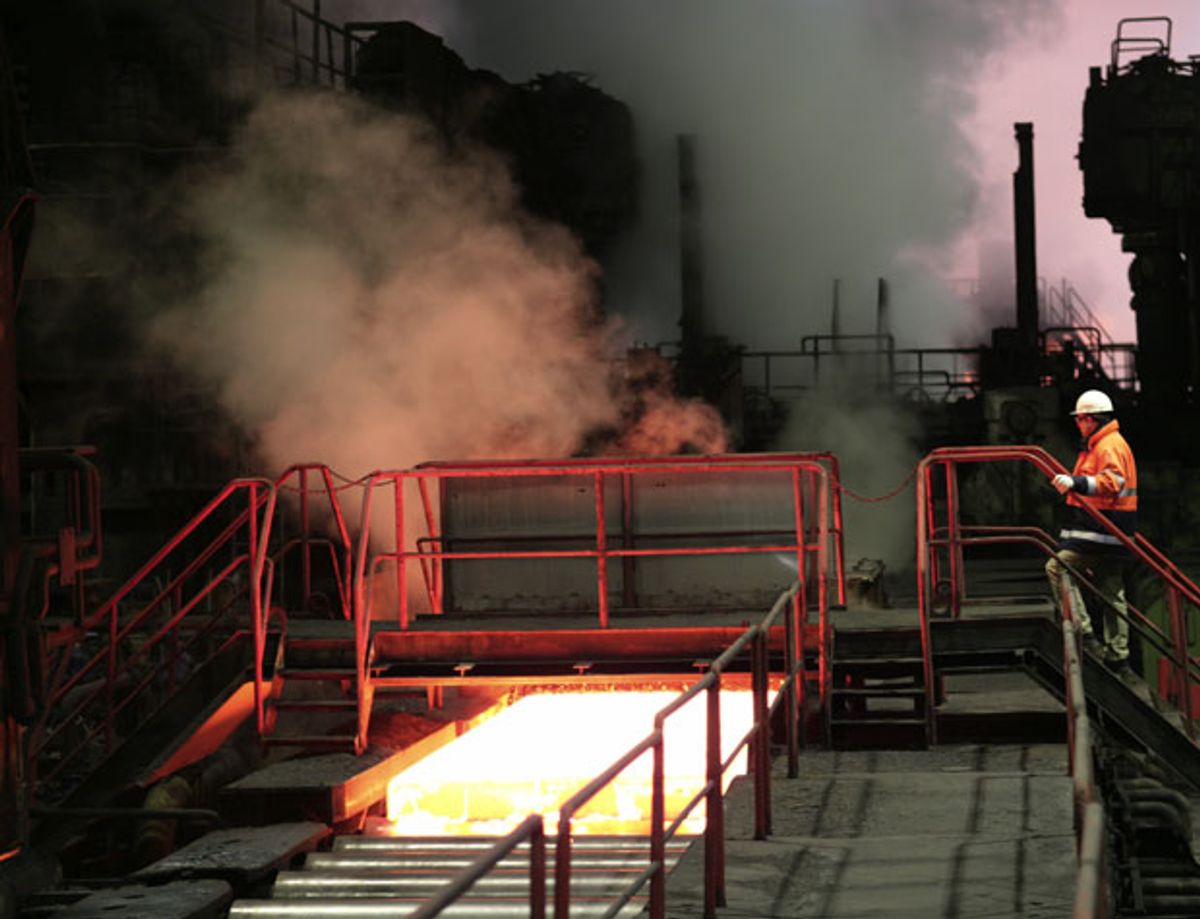In a series of articles this week and last, the Wall Street Journal and the Financial Timeshave reported that carbon prices in the European Trading System (ETS) are falling so low, there is no longer any real incentive for big economic players to cut greenhouse gas emissions (GHG) and some players are cancelling plans to adopt lower-carbon technologies. The Journal reports for example that utilities in the Czech Republic, Poland and Germany are reconsidering plans to phase out coal generating plants.
Since reaching a high of 28.70 euros a tonne (around US $40/t) before the world financial crisis, the price of a carbon emission allowance has dropped back to as low as 3 euros per tonne--about $4/t--a fraction of what would be needed to spark GHG-reducing investments. A decision by the European Parliament to withhold 900 million emission allowances over the next five years has not done much so far to shore up the ETS. The price of allowance remains barely above 5 euros/tonne, a third of what it was just 18 months ago.
Commenting on an earlier vote by the European Parliament's environment committee supporting the idea of curtailing issuance of allowances, a reporter for the Financial Times wrote, "It’s curious that in this little corner of European Union co-ordination, a little good news doesn’t even provide a brief rally; prices fell more than 20 per cent after news of the vote."
Among those who are hostile to the idea of taking aggressive action to reduce global greenhouse gas emissions, it's been fashionable to poke fun at the European Union, its seemingly hapless cap-and-trade system, and the apparent gap between the EU's ambitions and its actual performance. This is unfair and unreasonable from most points of view. As documented repeatedly by the Intergovernmental Panel on Climate Change, Europe--and for all practical purposes Europe alone--has made substantial progress toward achieving the goals enunciated in the 1997 Kyoto Protocol. And the failures of the ETS are not intrinsic to the cap-and-trade concept as such, but arise merely from the procedures adopted to implement the trading system.
One might suppose, given strong European traditions of rational bureaucratic government going back to the era of "enlightened despotism" in the eighteenth century that the number of emissions allowances issued in the ETS would be a direct function of what the ETS is supposed to achieve: Europe has said it wants to cut its collective emissions by 20 percent from 1990 levels, and so shouldn't the number of allowances be geared to get exactly that job done? In fact, the number of allowances is agreed to in back-room haggling among the Union's 27 member states. So far, the eastern European countries that depend heavily on coal generation and the German steel industry (photo)--to name the two most important players--have seen to it that allowances are so generous nobody really needs to do anything different from business as usual.
If there is a silver lining in this cloud it could be this: Until the middle of the last decade, Europe was making rapid strides to cut emissions, while Americans were sitting on their hands; but in the last eight years, despite U.S. distaste for Kyoto, the United States has sharply cut emissions while Europe's performance has deteriorated. So, from a diplomatic point of view, we now have a somewhat level playing field, which may make for warmer feelings and more constructive attitudes in upcoming climate negotiations.
Image: Ulrich Baumgarten/Getty Images



